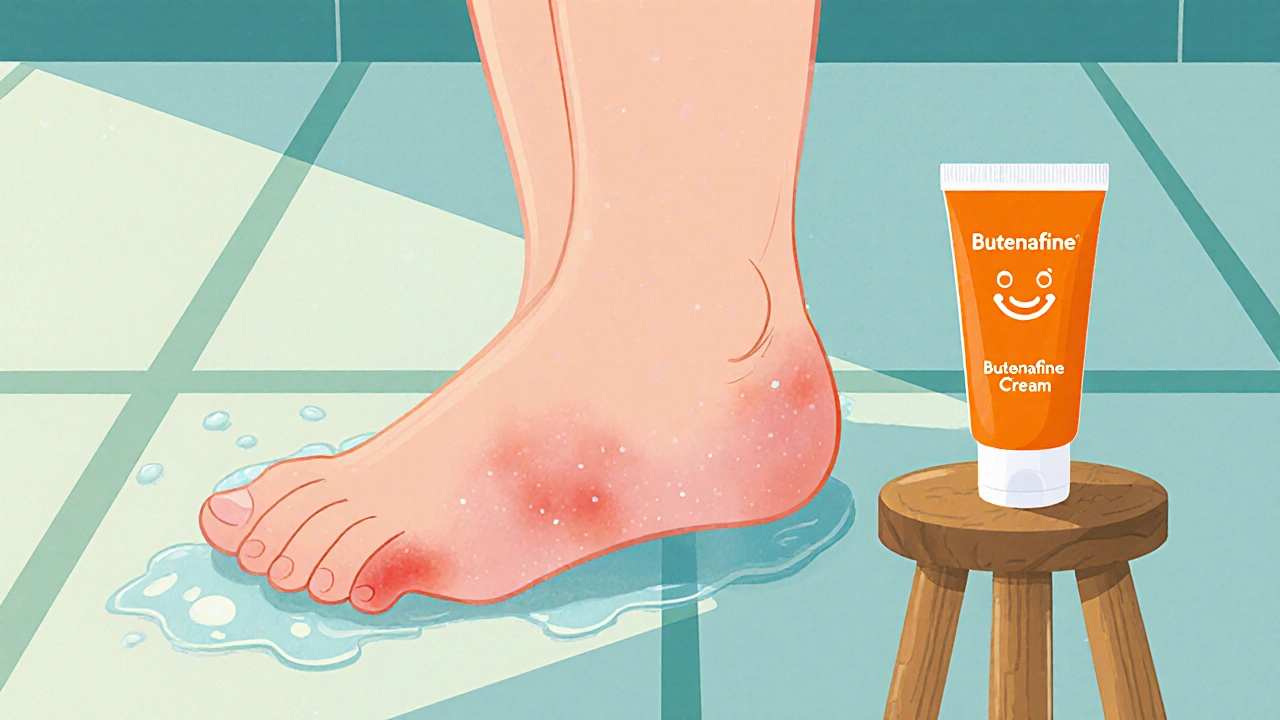Antifungal Cream: Best Uses, Risks, and Alternatives
When your skin itches, flakes, or turns red in warm, damp areas, it might not be a simple rash—it could be a antifungal cream, a topical treatment used to kill or slow down fungi causing skin infections. Also known as topical antifungals, these creams are one of the most common first-line treatments for fungal skin problems like athlete’s foot, jock itch, and yeast rashes. Unlike antibiotics that target bacteria, antifungal creams work on fungi—microbes that thrive in moist areas like between your toes, under your breasts, or in skin folds. They don’t cure everything that looks like a rash, but when used right, they clear up infections fast.
Not all skin irritations need antifungal cream. If you’ve tried one and it didn’t help, you might have eczema, psoriasis, or even a bacterial infection. That’s why it’s important to know what you’re treating. athlete’s foot, a fungal infection between the toes that causes peeling, burning, and blisters is the most common reason people reach for these creams. candida skin infection, a yeast overgrowth that shows up as red, itchy patches in warm skin areas is another frequent target, especially in people who sweat a lot, wear tight clothes, or use steroids. These creams usually contain ingredients like clotrimazole, miconazole, or terbinafine, and most work within a week if you use them daily as directed.
But there are risks. Using antifungal cream too long—especially on sensitive skin—can cause irritation, thinning, or even make the infection worse if the fungus becomes resistant. Some people use them for rashes that aren’t fungal at all, which delays real treatment. And if you’re using a steroid cream mixed with an antifungal (common in some OTC products), you might be masking symptoms while damaging your skin over time. That’s why it’s smart to know when to stop and see a doctor. If the rash spreads, gets worse after a week, or comes back after treatment, it’s not just a simple fungal issue.
What if antifungal cream doesn’t work? There are other options. Oral antifungals like fluconazole can help for stubborn or widespread infections. Some people turn to natural remedies like tea tree oil or coconut oil, but evidence is mixed. For recurring infections, lifestyle changes matter more than you think—keeping skin dry, wearing breathable fabrics, and avoiding shared towels can cut down flare-ups. And if you’ve been using corticosteroid creams for years (as mentioned in some of our posts on skin atrophy), you might need to address the root cause, not just the surface symptoms.
The posts below cover real cases and comparisons you won’t find in drug labels. You’ll see how antifungal creams stack up against other treatments, what doctors really recommend when OTC options fail, and how to avoid the most common mistakes that make infections worse. Whether you’re dealing with a stubborn foot rash, a recurring yeast patch, or just tired of guessing what’s wrong with your skin, these guides give you the straight facts—not marketing.

Butenafine for Athlete's Foot: Fast, Effective Treatment Guide
Discover why butenafine is a fast, effective OTC solution for athlete's foot, how it works, proper usage steps, safety tips, and how it compares to other antifungals.
October 17 2025